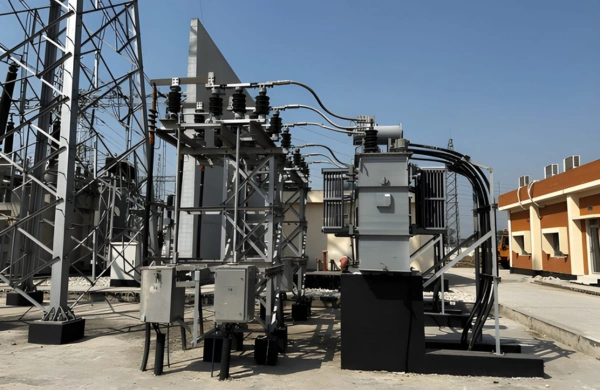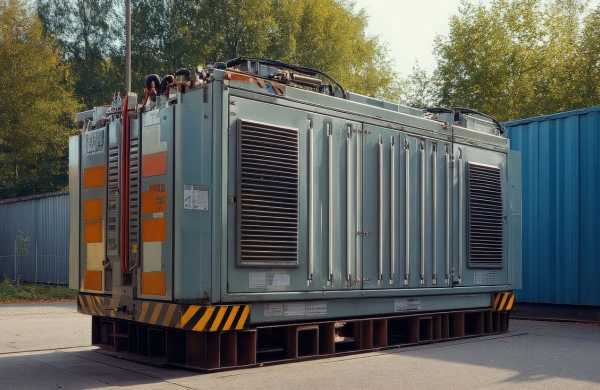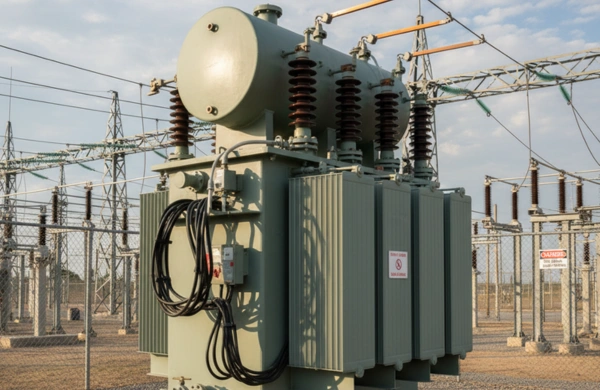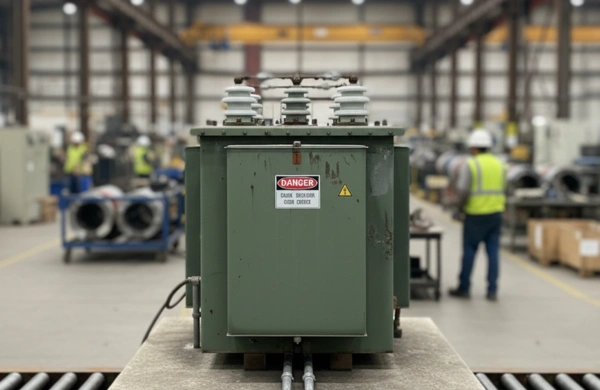In every substation, power plant, and industrial facility, numerous systems operate behind the scenes to keep operations running safely and efficiently. These systems — from cooling pumps to control panels — rely on a stable power source independent of the main grid flow. The component enabling this reliability is the auxiliary transformer.
Though smaller in capacity, auxiliary transformers play an outsized role in grid stability. They provide the power necessary to operate critical auxiliary equipment such as switchgear, protection relays, lighting, and HVAC systems—ensuring that substations remain functional even during faults or shutdowns.
What Is an Auxiliary Transformer?
An auxiliary transformer is a small-capacity transformer that steps down the main bus or generator voltage to a level suitable for auxiliary loads—typically from 11–33 kV down to 415 V or 240 V.
These transformers ensure uninterrupted operation of auxiliary systems such as
- Protection and control circuits
- Substation automation panels
- Oil pumps, cooling fans, and heaters
- Emergency lighting and signaling systems
Without auxiliary transformers, substations and plants would lose their own support power during faults—putting critical operations and safety at risk.
Role in Power Systems
Auxiliary transformers act as the nerve center of internal power supply in both grid and industrial installations.
1. Powering Control and Protection Systems
They provide low-voltage power to protection relays, monitoring sensors, and switchgear control systems.
2. Supporting Substation Equipment
Cooling fans, oil pumps, and gas monitoring systems depend on auxiliary power to maintain optimal operating conditions for main transformers.
3. Maintaining Safety Systems
Auxiliary transformers power emergency lights, alarms, and fire suppression systems that activate even during grid faults.
4. Enabling Black Start Capability
In generation facilities, auxiliary transformers supply initial startup power for systems during restoration or blackouts.
Construction and Design
Though compact in size, auxiliary transformers are engineered with the same precision and reliability standards as larger grid transformers.
Core and Windings
- Constructed with high-quality CRGO steel cores for reduced losses.
- Windings made from electrolytic copper with Class F/H insulation for thermal endurance.
Cooling and Insulation
Depending on site conditions, auxiliary transformers may be oil-immersed (ONAN/ONAF) or dry-type (VPI or cast resin).
- Oil-cooled versions are ideal for outdoor substations.
- Dry-type variants suit indoor control rooms or enclosed spaces.
Mounting and Enclosures
Units are available in pole-mounted, floor-mounted, or compact enclosures with IP-rated protection against dust and moisture.
Ratings and Specifications
| Parameter | Typical Range |
| Voltage Class | 6.6 kV to 33 kV |
| Capacity | 25 kVA to 1000 kVA |
| Frequency | 50 / 60 Hz |
| Cooling Type | ONAN / Dry-type |
| Insulation Class | F/H |
| Efficiency | >98% |
Applications Across Grid and Industrial Sectors
Auxiliary transformers are integral wherever reliable internal power is required.
1. Power Plants
Used to feed control, protection, and lubrication systems in generation units.
2. Substations
Provide auxiliary supply to switchgear, SCADA panels, and transformer auxiliaries.
3. Industrial Plants
Support local operations like control panels, safety alarms, and lighting in heavy industries.
4. Renewable Energy Systems
Used in wind and solar substations to power control and protection equipment even during grid isolation.
5. Transportation Infrastructure
Essential for powering control circuits in railway and metro substations.
Engineering Benefits of Auxiliary Transformers
1. Continuous Reliability
These transformers maintain uninterrupted auxiliary power for critical systems, ensuring operational continuity.
2. Compact and Efficient Design
Compact footprint with high efficiency makes them suitable for confined control rooms and modular substations.
3. Operational Flexibility
Can be configured for independent or shared bus systems, providing backup redundancy when required.
4. Safety and Compliance
Incorporate temperature sensors, pressure relief valves, and protective relays to safeguard both the transformer and connected equipment.
5. Easy Maintenance
Simplified structure allows quick inspection, oil sampling (for oil-filled units), or resin surface cleaning (for dry-type models).
Testing and Standards Compliance
Auxiliary transformers must meet the same stringent performance criteria as larger units.
Applicable Standards:
- IEC 60076 – Power Transformers
- IS 1180 – Energy Efficiency Standards
- IS 2026 – Transformer Construction and Testing
- IEEE C57.12 – Instrument and Auxiliary Transformers
Testing parameters include:
- Voltage ratio and polarity check
- No-load and short-circuit losses
- Temperature rise and insulation resistance
- Impulse and dielectric testing
- Sound level and partial discharge checks
Each transformer undergoes these tests before dispatch to ensure fault-free operation in the field.
Zetwerk’s Engineering Expertise in Auxiliary Transformers
Zetwerk manufactures auxiliary transformers that combine compact design, thermal efficiency, and long-term reliability. Each unit is engineered to support grid and industrial operations seamlessly.
Core Manufacturing
Laser-cut CRGO laminations minimize core losses and noise.
Coil Winding
Automated coil winding ensures precision and tight mechanical tolerances.
Impregnation and Assembly
Vacuum Pressure Impregnation (VPI) enhances dielectric strength, while epoxy coatings prevent moisture ingress.
Quality Control
Routine and type tests are performed under ISO-certified manufacturing systems, with complete documentation and traceability.
Why EPCs and Utilities Choose Zetwerk
- Custom-built solutions for each voltage and auxiliary load requirement.
- Proven reliability in high-temperature and high-humidity environments.
- Compliance-ready documentation for power projects and tenders.
- Short lead times through integrated design-to-delivery processes.
- Strong after-sales support with testing and service guidance.
Zetwerk’s auxiliary transformers are built to handle demanding grid and plant conditions—providing the dependable foundation auxiliary systems require.
Conclusion
In the power ecosystem, even the most advanced substations rely on auxiliary transformers to keep critical systems running. Their compact size hides their importance—delivering reliable power for protection, monitoring, and safety operations that sustain grid resilience.
When your project requires dependable auxiliary power that never fails, partner with Zetwerk—where engineering precision powers reliability behind every system that keeps the grid running.
FAQs
a. It provides low-voltage supply for auxiliary systems such as control panels, cooling pumps, and safety devices.
a. Typically 25 kVA to 1000 kVA, depending on substation or plant size.
a. Yes, for indoor installations or environments where fire safety is critical.
a. Routine inspections, oil sampling (for oil-filled types), and thermal scanning ensure long-term reliability.
a. Yes. Zetwerk builds auxiliary transformers tailored to each project’s voltage, capacity, and environmental requirements.









